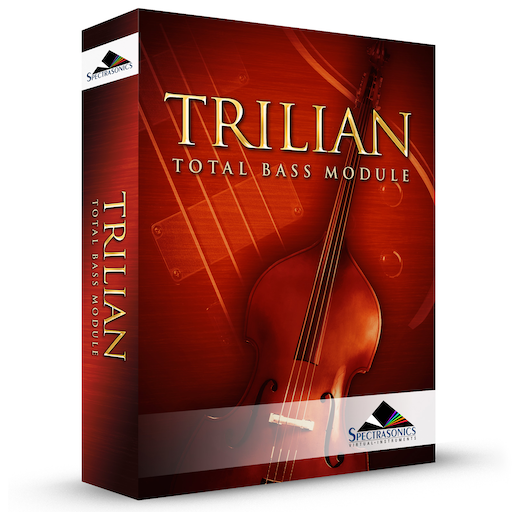
Selecting the Zoom icon on the Modulation header will open the Mod Matrix Zoom view. The Mod Matrix view offers precise control over all of the modulation routings in the Patch. The advantage of this zoom view is that the many routings can be displayed for editing simultaneously.
There are the same Source/Target sections, Depth and Target Parameter controls that are on the EDIT overview page, as well as some controls unique to the Mod Matrix Zoom, like smoothing. There are two sub-pages in Mod Matrix Zoom, each with twelve modulation routings making for a total of 24 possible modulation routings available per Patch.
It’s important to note that Trilian also has a number of fixed modulation routings as well. Many of the typical routings have already been hardwired in the STEAM engine, so they don’t have to be assigned. These include Velocity control over Envelope depth, Key Tracking to Cutoff, Filter Envelope to Cutoff, and so on.
Mod Matrix Page Switch

Toggles between the two Mod Matrix sub-pages. It’s generally a good rule of thumb to fill up the first modulation page before any mod routings are added on the second modulation page. Each page displays twelve routings at a time. The Mod Matrix shows modulation routings for both Layers simultaneously.
Modulation Smoothing

The modulation Smoothing control takes the incoming modulation source and slows the sharper points down, smoothing them out. This means that the character of the modulation source will not have quite as drastic or harsh an effect on the modulation destination. It works in a similar way to the Lag processors on some vintage synthesizers. This is the same principle that is used in Glide / Portamento, but applied to any source and target.
Modulation Status

This is a shared area with two switches, Mute & Invert.
The Mute control virtually disconnects the modulation routing. This is a quick way to hear what effect it’s having on the part.
The Invert control allows toggles between positive or negative modulation.
Modulation Source

The source area displays and selects the modulation source to control a target. Selecting the source will open up a menu of 28 modulation sources and “Off” – which negates any modulation source.
Modulation Depth

This control determines to what degree the source affects the modulation target. The higher the setting, the more the Source will affect the target. Depending on the kind of Modulation Source used, it is possible to send too much signal from the Modulation Source, which causes unexpected results in the target.
Modulation Target

The Target is the destination for the Source’s modulation output. Trilian has a large number of modulation targets, including synthesis parameters as well as effects parameters.
The full list of Targets is listed in the MODULATION section above.
Modulation Target Parameter

This control represents the setting of the target parameter – meaning it’s another representation of it.
Inside the parameter ‘slot’ is a dual indicator. The yellow line represents the range of the modulation and the white point indicates the current value of the modulation.

Layer Display Switches
These buttons allow viewing the active modulation routings on either layer. When Layer A or Layer B is selected, that layer’s modulation routings are shown in bright yellow text, while the other layer’s routings are disabled.
Need more help with this?
Spectrasonics Customer Support



